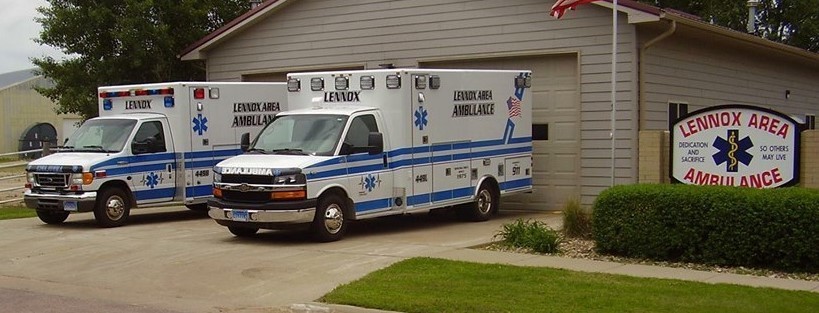When You Call 911 in South Dakota, an Ambulance May Not Come – But the Lennox Area Ambulance continues to answer the call after 50 years of service.
In South Dakota, when someone calls 911 during a medical emergency, they expect an ambulance to arrive quickly. But in many parts of the state, that may not happen — not because of traffic or weather, but because ambulance services are not legally considered an essential service. This legal distinction has serious implications for rural communities, emergency response, and even survival.
Unlike police or fire services, which are mandated and funded by local governments, Emergency Medical Services (EMS) in South Dakota are not required by state law. That means counties and cities are not obligated to provide or fund ambulance coverage. As a result, EMS across the state operates on a fragile patchwork of volunteers, local contracts, and community goodwill — with no guarantee of timely response.
In some areas, especially rural counties, the nearest ambulance could be over 30 minutes away, or unavailable altogether. During emergencies like heart attacks, strokes, or major trauma, such delays can be fatal.
The system also faces chronic staffing shortages and funding gaps. Many agencies rely on part-time or volunteer EMTs, while also struggling to cover rising costs for equipment, training, and fuel. Legislative attempts to classify EMS as an “essential service” — which would force more consistent funding and minimum standards — have failed to pass in South Dakota.
Yet communities are pushing forward anyway. Despite the lack of a state mandate, the Lennox Area Ambulance continues to respond every time 911 is called, offering a high standard of care. The service maintains an 4.5-minute average response time, demonstrating a strong commitment to public safety. The agency employs 8 paramedics, 3 advanced EMTs (AEMTs), and 6 EMTs, giving it a skilled and professional staff capable of handling a wide range of medical emergencies. Their presence is a major asset to the region — but maintaining this level of service isn’t free.
To keep the service sustainable in the future, a tax district needs to be formed within the Lennox ambulance coverage area. This special taxing district would help fund operations, ensure adequate staffing, and protect the community’s access to fast, reliable emergency medical care. Without such local support, even strong services like Lennox could face difficult decisions about which areas to serve down the road. Currently all funding for the Lennox Area Ambulance is supplied by the tax payers of Lennox, yet the ambulance covers portions of 3 towns, 9 townships, and 189 sq miles.
Until EMS is declared an essential service statewide, many residents will continue to face risks when dialing 911 — unsure whether help is minutes away or miles out of reach. But for those in the Lennox region, thanks to dedicated professionals and the possibility of local investment, hope still rides in the back of a well-equipped ambulance combined with a sustainable funding source

